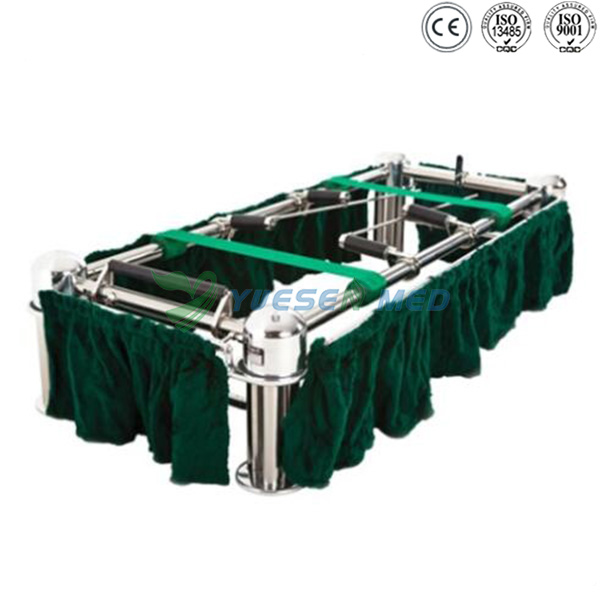Title: Advancing Hematology Analysis: Exploring the Five-Part Hematology Analyzer Machine
Introduction:
In the realm of medical diagnostics, hematology analysis plays a crucial role in assessing the health and function of blood components. Traditional hematology analyzers have evolved significantly, with the emergence of advanced technologies enabling comprehensive and precise blood cell analysis. Among these innovations, the
five-part hematology analyzer machine stands out for its ability to provide detailed insights into the cellular composition of blood. This article delves into the intricacies of five-part hematology analysis, the functionalities of these sophisticated machines, their applications across healthcare settings, and the impact they have on patient care.
Understanding Five-Part Hematology Analysis:
Five-part hematology analysis refers to the classification and quantification of five major types of blood cells: red blood cells (erythrocytes), white blood cells (leukocytes), platelets (thrombocytes), lymphocytes, and granulocytes. Traditional hematology analyzers typically focus on measuring the three main cell types—red blood cells, white blood cells, and platelets—while five-part analyzers offer additional granularity by distinguishing between different subpopulations of white blood cells, such as lymphocytes, neutrophils, eosinophils, and basophils. This comprehensive analysis provides clinicians with valuable information about the immune system, hematopoietic function, and potential pathological conditions affecting blood cells.
Functionalities of Five-Part Hematology Analyzer Machines:
Automated Cell Counting: Five-part hematology analyzer machines utilize advanced optical and flow cytometry techniques to automate the counting and sizing of blood cells. By analyzing the light scatter and absorbance properties of individual cells, these machines can accurately determine cell concentrations and morphological characteristics, including cell size, shape, and granularity.
Differential Leukocyte Analysis: One of the key features of five-part hematology analyzers is their ability to perform differential leukocyte analysis, which involves identifying and quantifying different types of white blood cells. This includes distinguishing between lymphocytes, neutrophils, monocytes, eosinophils, and basophils based on their unique cellular properties and staining patterns.
Hemoglobin Analysis: In addition to cell counting, five-part hematology analyzers measure hemoglobin concentration in blood samples using various colorimetric methods. Accurate hemoglobin analysis is essential for diagnosing and monitoring conditions such as anemia, polycythemia, and hemoglobinopathies, providing valuable insights into the oxygen-carrying capacity of the blood.
Platelet Function Assessment: Five-part hematology analyzer machines assess platelet function by measuring platelet count, size, and distribution. Platelet abnormalities can indicate underlying disorders such as thrombocytopenia, thrombocytosis, or platelet dysfunction, which may increase the risk of bleeding or thrombotic events.
Quality Control and Calibration: To ensure accuracy and reliability, five-part hematology analyzer machines undergo rigorous quality control procedures and regular calibration. This includes calibrating instrument optics, monitoring reagent integrity, and performing daily quality control checks to verify analytical performance and maintain consistency in results.
Applications Across Healthcare Settings:
Clinical Laboratories: Five-part hematology analyzer machines are indispensable tools in clinical laboratories, where they facilitate rapid and accurate blood cell analysis for diagnostic purposes. From routine blood counts to specialized hematological tests, these machines play a central role in diagnosing and monitoring a wide range of hematological disorders, including anemia, leukemia, lymphoma, and thrombocytopenia.
Hospital Wards and Emergency Departments: In hospital wards and emergency departments, rapid access to hematology analysis is critical for timely patient management and treatment decisions. Five-part hematology analyzer machines enable healthcare providers to quickly assess patients' hematological status, monitor response to therapy, and detect potential complications such as sepsis, hemorrhage, or thromboembolism.
Hematology Clinics and Specialty Centers: Hematology clinics and specialty centers rely on five-part hematology analyzer machines to perform in-depth hematological evaluations for patients with complex or rare blood disorders. These machines provide detailed insights into blood cell morphology, immunophenotyping, and genetic abnormalities, guiding personalized treatment strategies and disease monitoring protocols.
Research Laboratories: In research laboratories, five-part hematology analyzer machines support basic and translational research efforts aimed at understanding the pathophysiology of hematological diseases and developing novel therapeutic interventions. By providing accurate and reproducible blood cell data, these machines facilitate studies on disease mechanisms, biomarker discovery, and drug development.
Blood Banks and Transfusion Services: Blood banks and transfusion services utilize five-part hematology analyzer machines to assess the quality and compatibility of blood products for transfusion purposes. These machines ensure that donated blood components meet regulatory standards for cell counts, hemoglobin levels, and leukocyte compatibility, minimizing the risk of transfusion reactions and ensuring patient safety.
Impact on Patient Care:
The adoption of five-part hematology analyzer machines has had a transformative impact on patient care, revolutionizing the diagnosis, treatment, and management of hematological disorders. By providing comprehensive and accurate blood cell analysis, these machines enable healthcare providers to make informed clinical decisions, tailor treatment regimens to individual patient needs, and monitor disease progression over time. The ability to perform rapid and reliable hematological assessments enhances patient outcomes, reduces healthcare costs, and improves overall quality of care across diverse healthcare settings.
Challenges and Future Directions:
Despite their many advantages, five-part hematology analyzer machines are not without challenges. Technical limitations, instrument maintenance requirements, and the need for specialized training can pose barriers to widespread adoption and utilization. Furthermore, ongoing advancements in hematology research and technology present opportunities for further refinement and innovation in blood cell analysis techniques. Future directions may include the integration of artificial intelligence algorithms for data interpretation, the development of point-of-care testing devices for decentralized hematology analysis, and the exploration of novel biomarkers and diagnostic assays for emerging hematological conditions.
Conclusion:
Five-part hematology analyzer machines represent a pinnacle of innovation in the field of medical diagnostics, offering unparalleled capabilities for comprehensive blood cell analysis. From automated cell counting to differential leukocyte analysis, these machines provide clinicians with invaluable insights into hematological health and disease. With their wide-ranging applications across healthcare settings and their transformative impact on patient care, five-part hematology analyzer machines continue to shape the landscape of modern hematology practice. As technology advances and our understanding of blood cell biology deepens, these machines will remain essential tools in the quest for improved diagnostics, personalized therapies, and better outcomes for patients with hematological disorders.
Expanding on Challenges and Future Directions:
Despite their significant advancements, five-part hematology analyzer machines face several challenges that warrant attention and further innovation.
Technical Complexity: Five-part hematology analyzers are sophisticated instruments that require regular maintenance, calibration, and troubleshooting. Ensuring optimal performance and accuracy may pose challenges for healthcare institutions, particularly in resource-limited settings where technical expertise and infrastructure may be lacking. Simplifying instrument operation and maintenance procedures could enhance accessibility and usability, expanding the reach of advanced hematology analysis to a broader patient population.
Cost Considerations: The initial investment and ongoing operational costs associated with five-part hematology analyzer machines can be substantial, limiting their adoption in smaller healthcare facilities and low-resource regions. Addressing cost barriers through strategic pricing models, equipment financing options, and collaborative procurement initiatives may help to make these technologies more accessible to underserved communities and resource-constrained settings.
Integration and Interoperability: Seamless integration of hematology analyzer data with electronic health record (EHR) systems and laboratory information management systems (LIMS) is essential for efficient workflow management and data exchange in healthcare settings. Standardizing data formats, interfaces, and communication protocols can facilitate interoperability and enable real-time access to hematology results for healthcare providers across different departments and care settings.
Quality Assurance and Standardization: Ensuring the accuracy and reliability of hematology analyzer results is paramount for patient safety and effective clinical decision-making. Robust quality assurance programs, proficiency testing schemes, and external quality assessment programs are essential for monitoring analytical performance, identifying potential issues, and maintaining compliance with regulatory requirements. Collaborative efforts among manufacturers, regulatory agencies, and professional societies can promote standardization of analytical methods and harmonization of reference ranges, improving consistency and comparability of hematology results worldwide.
Advancements in Analytical Techniques: Continued innovation in hematology analysis techniques holds promise for enhancing the capabilities and clinical utility of five-part hematology analyzer machines. Emerging technologies such as mass cytometry, digital imaging flow cytometry, and single-cell sequencing offer opportunities for deeper insights into blood cell biology, immune function, and disease pathology. Integrating these cutting-edge techniques into next-generation hematology analyzers could enable more comprehensive and personalized diagnostics, paving the way for precision medicine approaches in hematology practice.
Conclusion:
Despite the challenges they face, five-part hematology analyzer machines represent a cornerstone of modern hematology practice, providing clinicians with invaluable tools for comprehensive blood cell analysis and diagnostic decision-making. By addressing technical, financial, and operational challenges and embracing ongoing advancements in analytical techniques and data integration, these machines can continue to advance the frontiers of hematology research and clinical care. With a commitment to innovation, collaboration, and patient-centered excellence,
five-part hematology analyzer machines will remain indispensable instruments in the pursuit of improved diagnostics, personalized therapies, and better outcomes for patients with hematological disorders.



